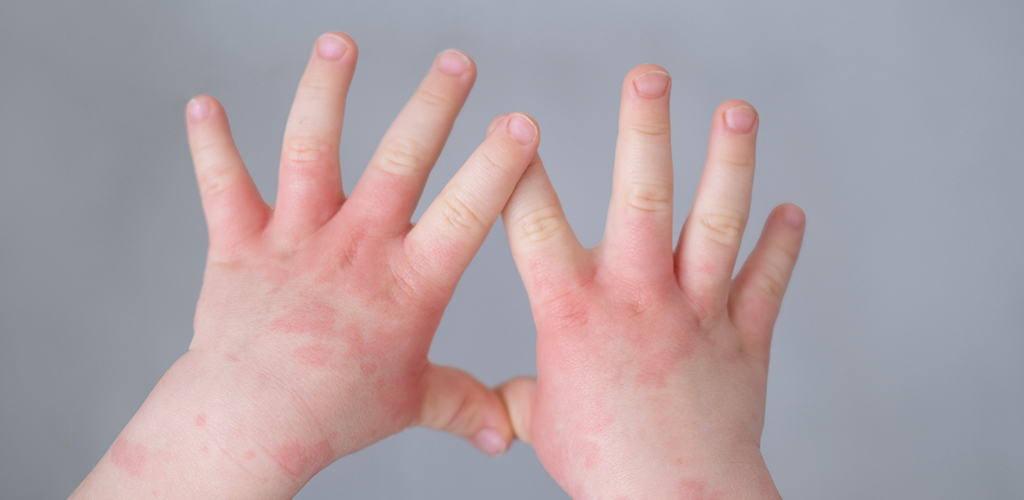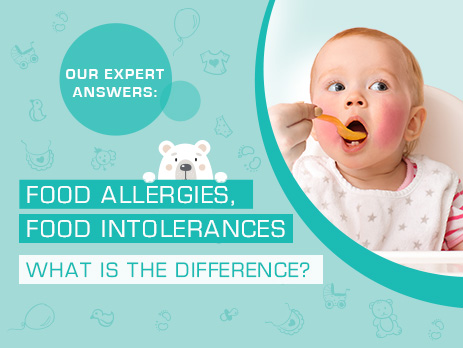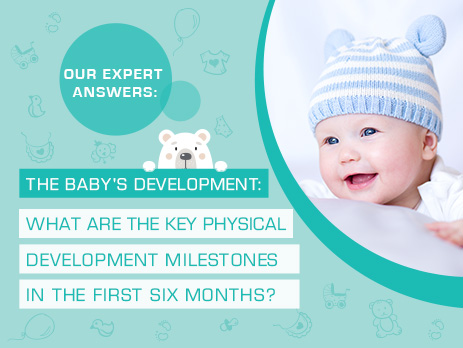Food allergy vs. food intolerance: differences and symptoms
IN THIS ARTICLE:
Food allergy or food intolerance?
What to watch for during infant weaning?
Can food allergies be outgrown?
What types of allergy tests exist?
Key considerations for allergy testing
The Key to Eternal Youth in Modern Skincare
During infant weaning, introducing a new food always raises the question of how it will affect the baby’s system. Food allergies and food intolerances can cause similar symptoms, leading to confusion between the two terms. However, it is crucial to differentiate between food allergy and food intolerance, as their causes and treatments differ.
Another important aspect is understanding which tests can help identify the root cause of various symptoms.
In the video below, Dr. Tibor Kovács, pediatric specialist, provides useful advice on the differences between food allergies and food intolerances and explains what steps to take in different situations.
What is the difference between food allergy and food intolerance?
A food allergy is an immune system reaction to certain food proteins. In this case, the body mistakenly identifies the ingested food as harmful, triggering an allergic response, during which the immune system produces antibodies.
Symptoms of food allergy:
- hives (urticaria)
- itching
- swelling around the face or throat
- difficulty breathing
- abdominal pain, nausea
- in severe cases, anaphylactic shock

Food intolerance occurs when the body is unable to properly digest certain foods. It is caused by a digestive system dysfunction, where specific nutrients cannot be broken down efficiently. Symptoms may appear immediately after consumption or even several hours later.
In infants, the most common intolerance is lactose (milk sugar) intolerance. The digestion of lactose requires the lactase enzyme, and its deficiency can lead to diarrhea and bloating.
- digestive issues
- bloating
- stomach discomfort
- intestinal problems
- diarrhea
- constipation
- skin problems
- headaches

What to watch for during infant weaning?
Weaning should generally begin around the 5th month, but no later than the end of the 6th month. It is recommended to introduce only one new food per day to easily identify any intolerances or allergic reactions. Allergenic foods should be introduced gradually, in small amounts over 3–5 days, preferably in the morning, so that if a reaction occurs, a pediatrician or health visitor can be easily reached.
Peanuts are one of the most well-known allergens, and the proteins found in peanuts are also present in almonds, walnuts, pistachios, and other nuts. If there is a family history of allergies, the baby has a higher risk of developing an allergy as well. In such cases, consulting a pediatrician is highly recommended.
Peanuts can trigger severe allergic reactions, including anaphylaxis, which is a life-threatening condition requiring immediate medical attention.
What types of allergy tests exist?
A blood test for allergens measures the level of IgE antibodies, which are produced only after the body has already been exposed to a specific allergen. In the case of food allergies, this means that the test will only detect an allergy if the child has previously consumed the problematic food.
Key considerations for allergy testing
Allergy testing is recommended if a family history, parental concerns, or a doctor suspects an allergy. Eczema-related skin issues can sometimes suggest an allergic reaction; however, only 10-14% of children with eczema actually have a confirmed food allergy.
Laboratory tests can indicate whether the body has developed a sensitivity to certain allergens, but the most reliable method is a biological trial. This involves eliminating the suspected allergen from the child’s diet and observing significant symptom improvement. If removing the allergen does not lead to a clear reduction in symptoms, the allergen may not be the actual cause.
Blood allergy tests often screen for hundreds of allergens, but IgG antibody levels alone do not always indicate an allergic reaction—they can also increase simply when the body has been exposed to an allergen. On the other hand, an increase in IgE antibodies is a stronger indication of an allergic response, but clinical symptoms must also be monitored during the elimination process to confirm the diagnosis.





